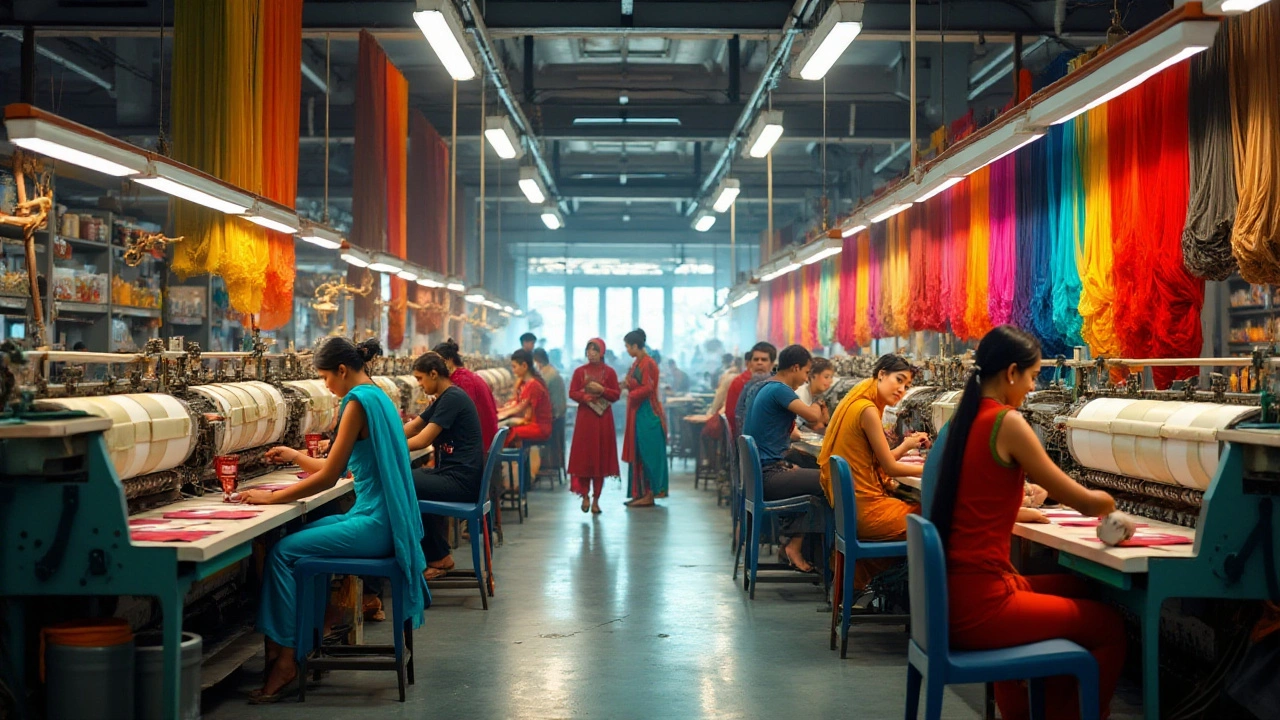- Top Electronics That Are Shaping India's Market Nov 25, 2024
- Biggest Steel Supplier in the US: Market Leaders, Facts, and Industry Tips Jul 30, 2025
- Most Processed Foods: Surprising Facts and Their Global Impact Aug 6, 2025
- Gujarat Famous Cloth: The Story Behind India's Textile Powerhouse May 25, 2025
- Most Profitable Small Scale Manufacturing Business Ideas Apr 6, 2025
India Textile Industry: Key Trends and Future Outlook
India’s textile sector isn’t just big; it’s a powerhouse that employs millions and fuels a lot of the country’s export earnings. If you’re wondering why this industry matters, think about the sheer variety of fabrics that come out of cities like Surat, Tirupur, and Bengaluru – from basic cotton to high‑tech blends. This guide breaks down what’s happening right now, what’s holding the sector back, and where the next big chances lie.
Growth Drivers and Export Highlights
First off, the numbers are impressive. In 2024 the Indian textile market crossed $120 billion, and exports added roughly $45 billion to that total. The surge is driven by three things: low labor costs, a massive domestic consumer base, and government schemes like the Production Linked Incentive (PLI) that push manufacturers toward advanced yarns and technical textiles.
That PLI push is already paying off. Companies are moving into smart fabrics, moisture‑wicking sports wear, and even medical‑grade textiles. Export markets such as the US, EU, and Middle East are snapping up these products because they combine quality with price advantage.
Another growth lever is the rise of e‑commerce. Online platforms let small‑scale units reach global buyers without a massive sales force. A cotton mill in Gujarat can now ship directly to a boutique in London, cutting middle‑man costs and boosting margins.
Challenges and Sustainable Solutions
But the road isn’t smooth. High power tariffs, inconsistent water supplies, and outdated machinery still bite profitability. Many factories still run on old looms that waste energy and produce uneven fabric quality.
Environmental concerns are also pushing the industry to rethink. Water‑intensive dyeing processes have drawn criticism, especially in water‑scarce regions. The good news? More firms are adopting closed‑loop water systems and low‑impact dyes. Some have even earned green certifications, opening doors to premium markets that demand sustainability.
Talent shortage is another headache. Skilled technicians who can operate modern CNC‑driven looms are in short supply. To bridge the gap, industry bodies are partnering with technical institutes, offering apprenticeships that combine classroom learning with hands‑on factory experience.
Financing remains a hurdle, especially for micro‑enterprises. Banks are cautious, but government-backed credit lines are improving access. If you’re a small producer, look for schemes that offer lower interest rates for technology upgrades.
Overall, the Indian textile industry is at a crossroads. The mix of strong demand, supportive policies, and a push toward greener production creates a fertile ground for growth. At the same time, addressing power costs, water usage, and skill gaps will decide how quickly the sector can climb to the next level.
So whether you’re a manufacturer, an investor, or just curious about where your favorite T‑shirt comes from, keep an eye on these trends. The next few years will likely shape the Indian textile story for decades to come.
Cost Analysis for Setting Up a Small Textile Manufacturing Unit in India
- Aarav Sekhar
- Dec 11, 2024
Discover the financial requirements and considerations for establishing a small textile manufacturing factory in India. This article will provide insight into the primary cost factors, like machinery, labor, and location, and offer tips to efficiently manage investments. Understand how market trends and government policies influence costs, and get familiar with the step-by-step process to jumpstart your textile business. Learn the financial dynamic within India's booming textile sector to make informed decisions.
